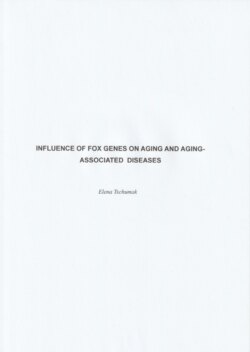Читать книгу Influence of FOX genes on aging and aging-associated diseases - Elena Tschumak - Страница 8
FOXP2 and neurodegeneration
ОглавлениеSeveral studies showed the significance of FoxP2 for the brain and skull development (Benítez-Burraco et al., 2015) but above all for the language. (Watkins et al., 2002; Vargha-Khadem et al., 1998; Middleton ad Strick, 2000; Watkins et al., 2002; Liegeois et al., 2003; Lai et al., 2003). The FOXP2 gene (formerly also known as SPCH1, TNRC10 or CAGH44) was mainly associated with important language functions. First, the FOXP2 became known through the work of Anthony Monaco and Svante Pääbo Group at the Institute for Evolutionary Anthropology of the Max Planck Society in Leipzig. They studied the linguistic deficient KE family and found an autosomal dominant missense point mutation in exon 14 of the 7th chromosome (in the 7q31 band guanine was replaced by adenine). This mutation replaced arginine (R) by histidine (H) at the position 553 R553H of the FOXP2 protein and caused an inhibition of the DNA-binding domain and the inoperability of the protein. Other FOXP2 mutations were also observed by dyspraxia patients. (MacDermot et al., 2005; O'Brien et al., 2003; Jiménez-Romero et al., 2016; Becker et al., 2015; Zeesman et al., 2006).
In 2016 described Tborres-Ruiz et al. a girl with inherited complete chromosomal rearrangement. This rearrangement was accompanied by a fracture proximal and distal to the FOXP2 gene and resulted in cognitive disabilities. The fracture in a new neuroblastoma cell line SK-N-MC led to the decline of FOXP2 and increase of MDFIC-P protein levels. The MDFIC-P gene is localized near FOXP2. The FOXP-2 significance for the childhood apraxia of speech (CAS) and other speech disorders were also described. (Morgan et al., 2017; Kurt et al, 2012)
The FOXP2 mutations are often accompanied by structural brain changes, so the new multimodal MRI study of an eight-year-old boy (A-II) with a de novo FOXP2 deletion by Liégeois et al. „Early neuroimaging markers of FOXP2 intragenic deletion“ (2016). The researchers described in their work significant bilateral structural abnormalities in the basal ganglia and in hippocampus. In the hippocampus, in the thalamus, in the globus pallidum and in the caudate nucleus a volume reduction was also observed in comparison to the control group of 26 healthy volunteers. The patients showed no detectable functional MRI activity by the repetition of nonsense phrases.
FOXP2 also plays a role in the visual system (Iwai et al., 2013; Horng et al., 2009), in psychiatric disorders, and in aging dependent frontotemporal degenerative dementia accompanied by speech disorders (Sanjuán et al., 2006; Park et al., 2014; Wang et al, 2016; Bacon and Rappold, 2012; Fisher and Scharff, 2009; Premi et al., 2012; Kumar, et al., 2011).
FOXP2 is important for brain development and communication in many animal taxa (e.g. songbirds, marine mammals, bats and possibly elephants) which learn to communicate through imitation and whose auditory processing needs to interact with motor control. (Scharff and Haesler, 2005)
Scharff and Petri (2011) emphasized in „Evo-devo, deep homology and FoxP2: implications for the evolution of speech and language“ that FOXP2 shows different expression cycles in different neuronal subtypes and „the more efforts should be directed at identifying the genomic loci regulating temporal expression differences of FoxP2“.
Other members of the FOXP2 family show many parallels to FOXP2. (Viscard et al., 2017)
